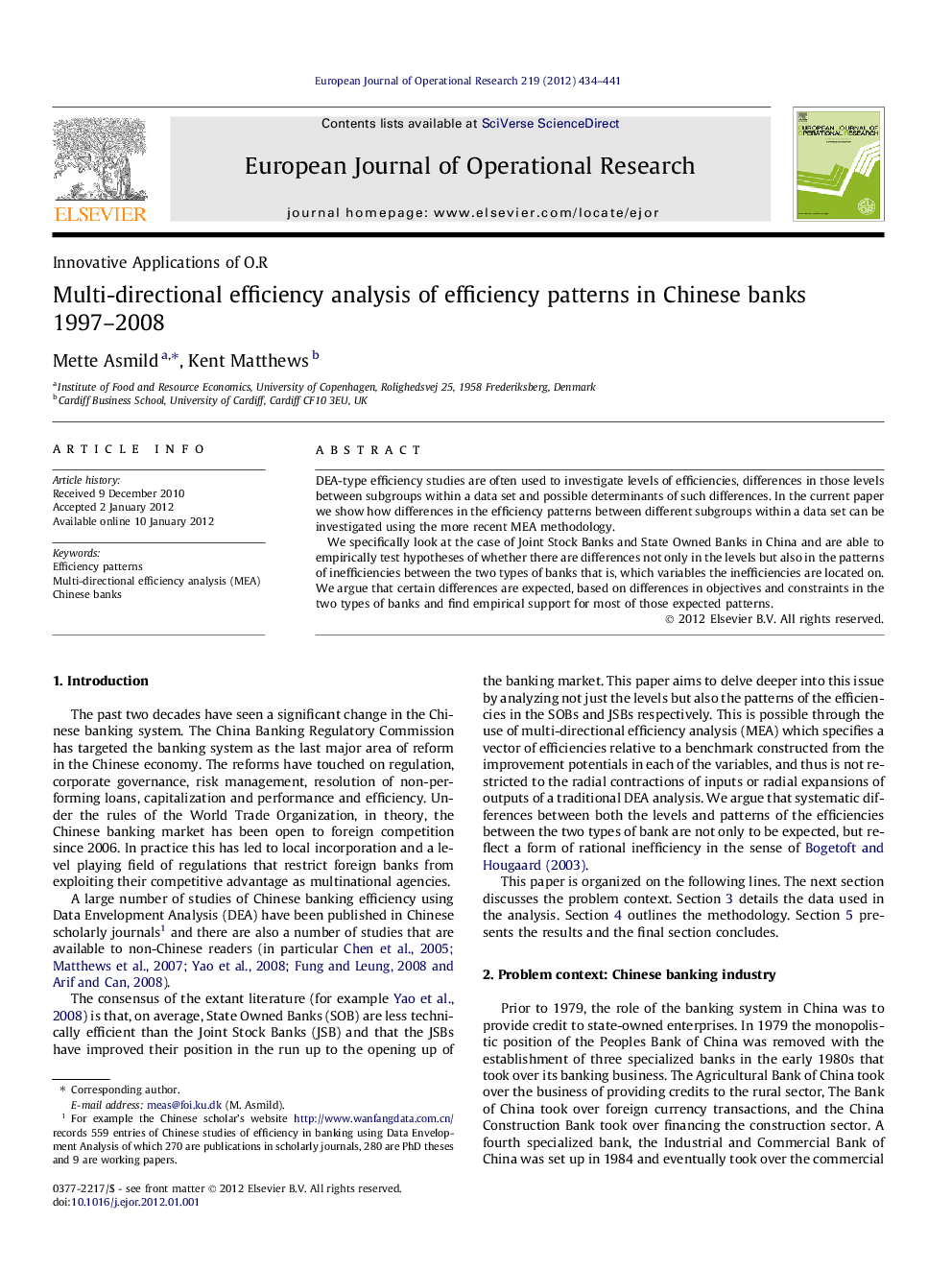| Article ID | Journal | Published Year | Pages | File Type |
|---|---|---|---|---|
| 480462 | European Journal of Operational Research | 2012 | 8 Pages |
DEA-type efficiency studies are often used to investigate levels of efficiencies, differences in those levels between subgroups within a data set and possible determinants of such differences. In the current paper we show how differences in the efficiency patterns between different subgroups within a data set can be investigated using the more recent MEA methodology.We specifically look at the case of Joint Stock Banks and State Owned Banks in China and are able to empirically test hypotheses of whether there are differences not only in the levels but also in the patterns of inefficiencies between the two types of banks that is, which variables the inefficiencies are located on. We argue that certain differences are expected, based on differences in objectives and constraints in the two types of banks and find empirical support for most of those expected patterns.
► Using MEA instead of DEA enables analysis of inefficiency patterns as well as levels. ► Empirical application compares Joint Stock Banks and State Owned Banks in China. ► Some differences between bank types expected due to differing objectives/constraints. ► The results provide empirical support for most of those expected patterns.
